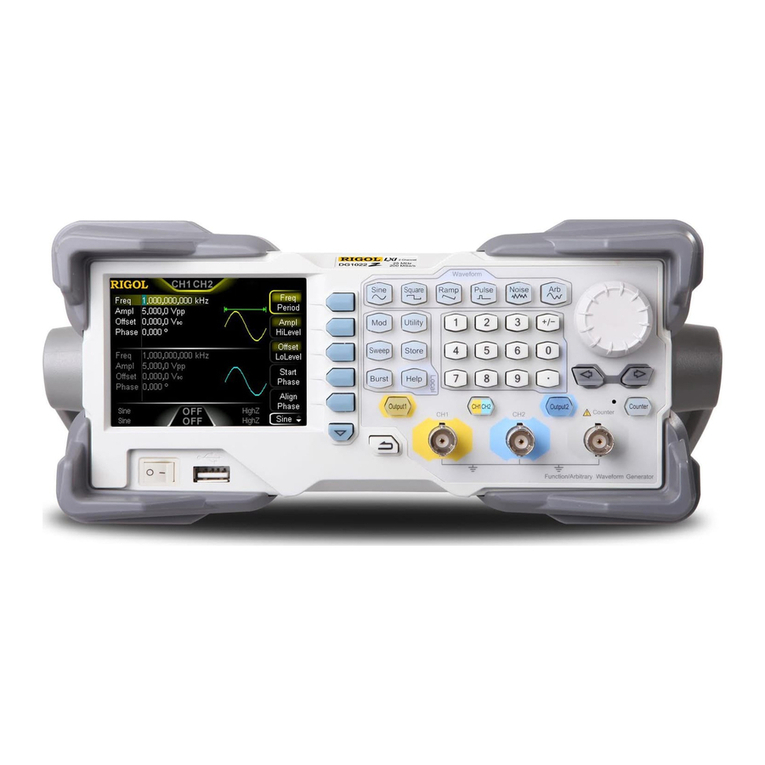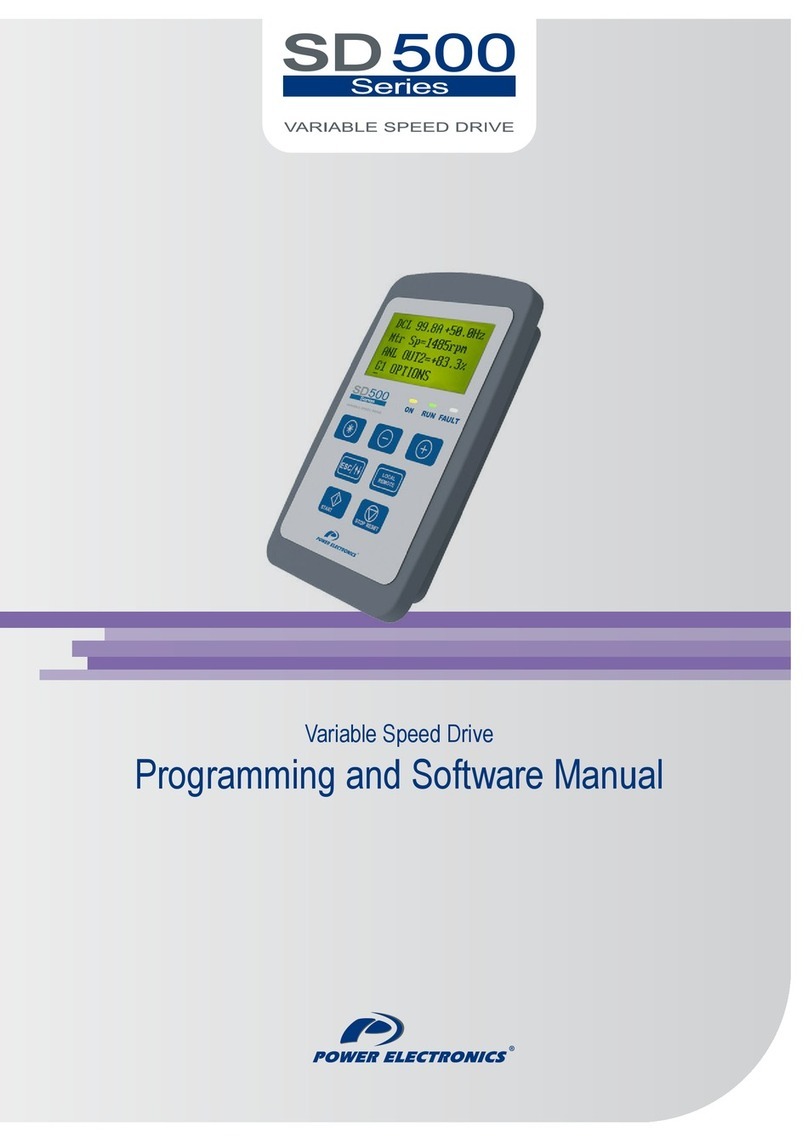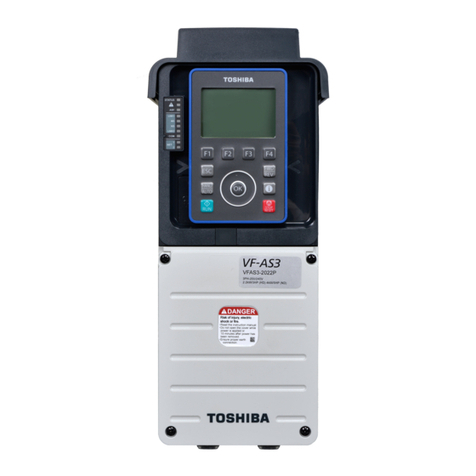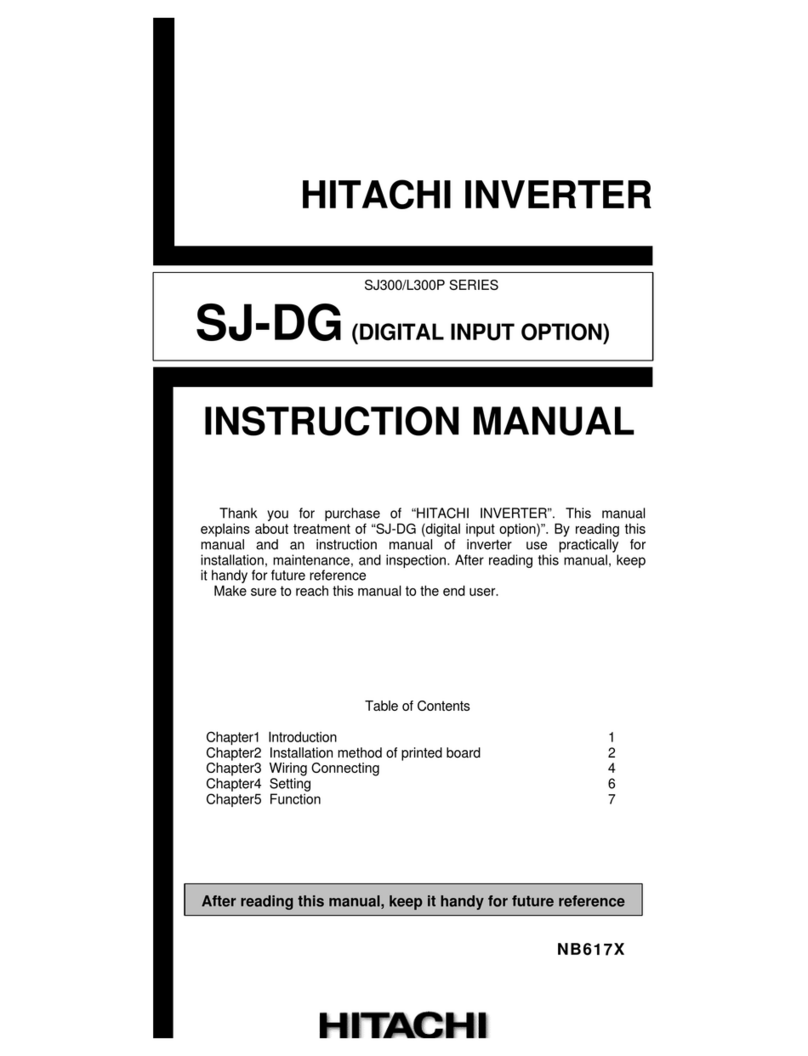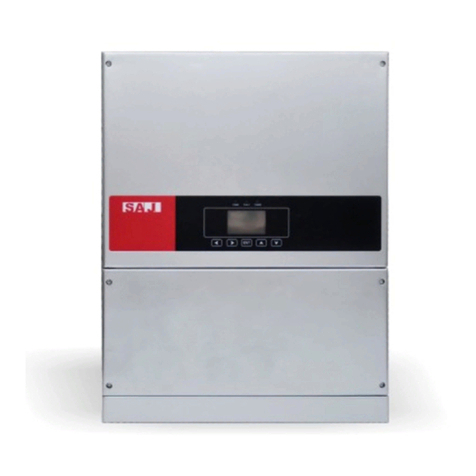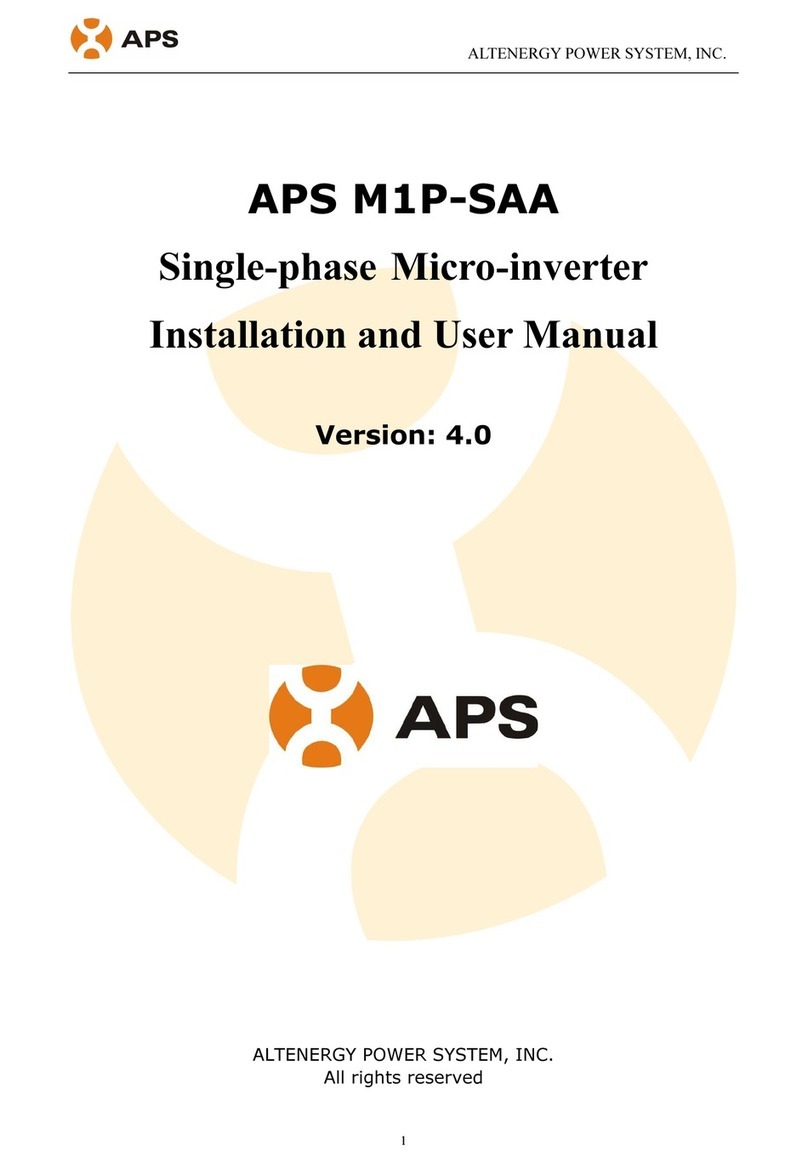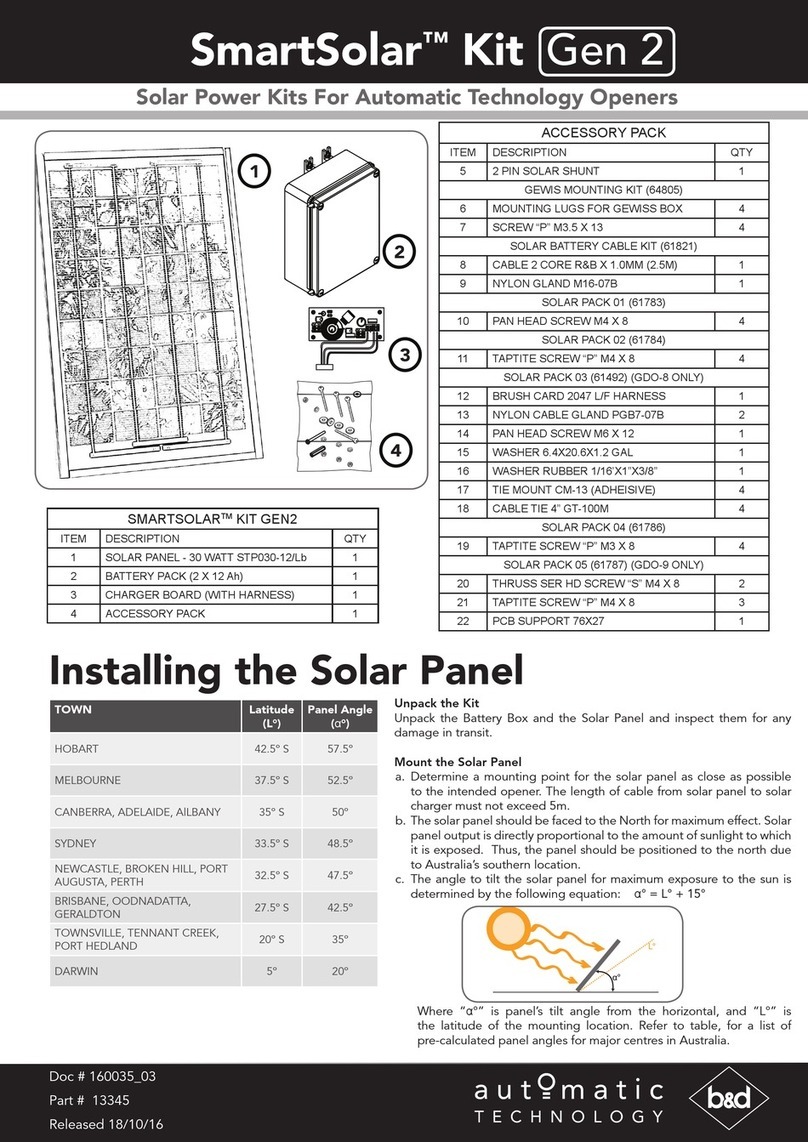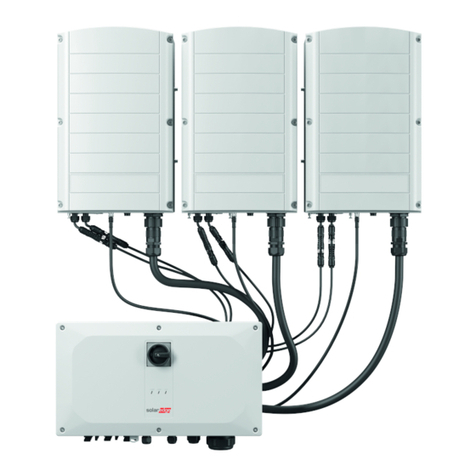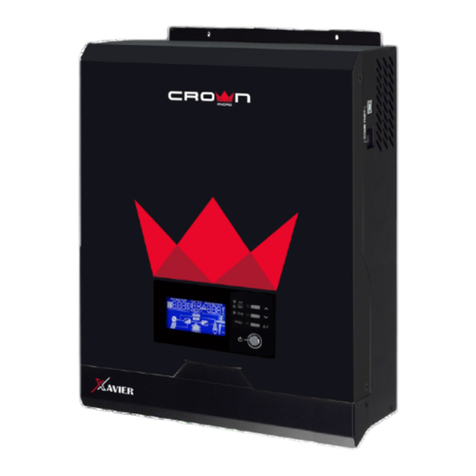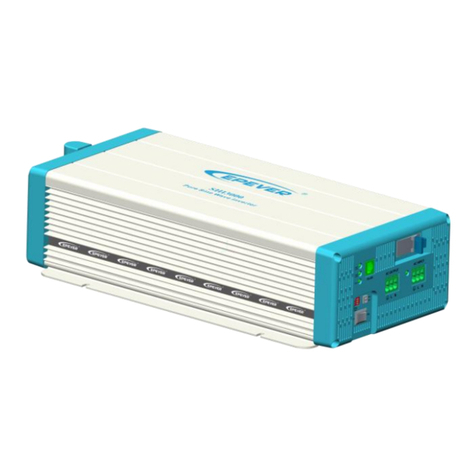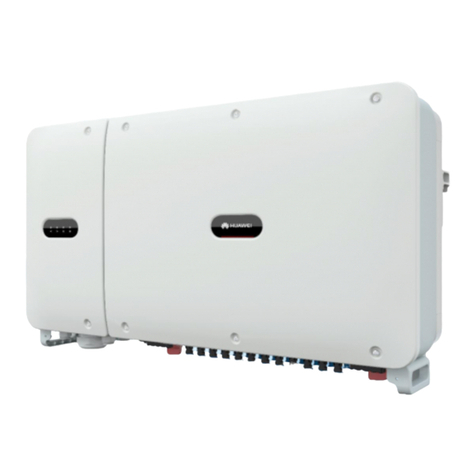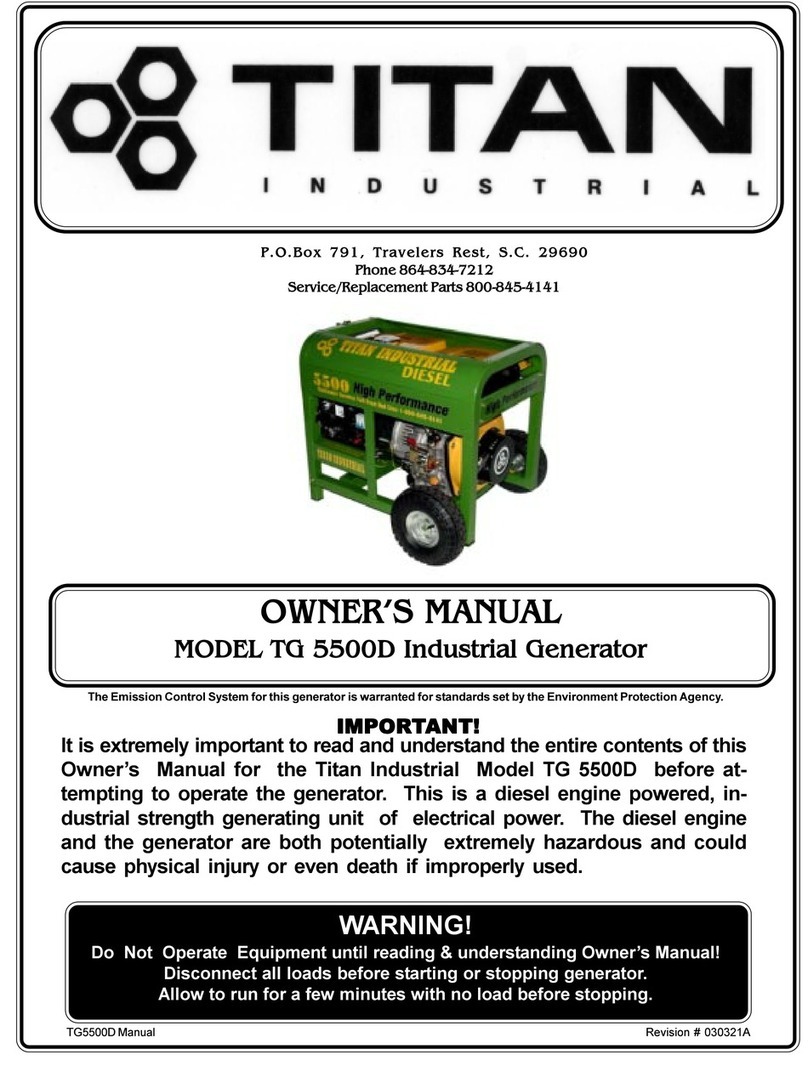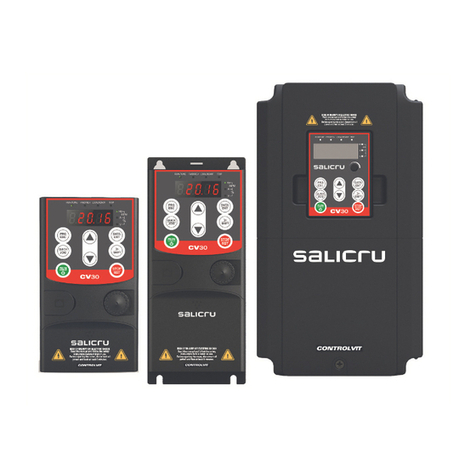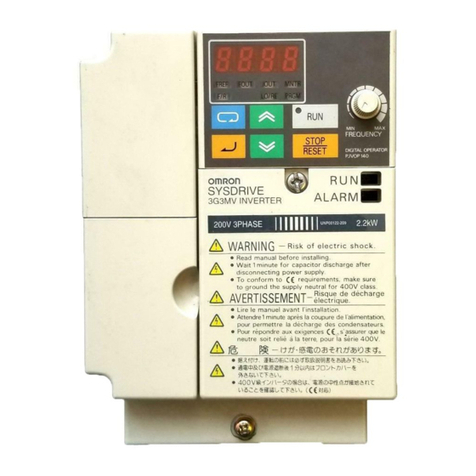Keysight Technologies P9336A User guide

Startup
Guide
Keysight Modular
Arbitrary Waveform Generator

Notices
Copyright Notice
© Keysight Technologies 2019
No part of this manual may be reproduced in
any form or by any means (including
electronic storage and retrieval or
translation into a foreign language) without
prior agreement and written consent from
Keysight Technologies, Inc. as governed by
United States and international copyright
laws.
Manual Part Number
P9336-90001
Edition
Edition: 2.1, June 2019
Published by:
Keysight Technologies Ground Floor and
Second Floor, CP-11 Sector-8, IMT
Manesar – 122051 Gurgaon, Haryana,
India
Regulatory Compliance
This product has been designed and
tested in accordance with accepted
industry standards, and has been
supplied in a safe condition. To
review the Declaration of
Conformity, go to
http://www.keysight.com/go/conf
ormity.
Warranty
THE MATERIAL CONTAINED IN THIS
DOCUMENT IS PROVIDED "AS IS," AND IS
SUBJECT TO BEING CHANGED, WITHOUT
NOTICE, IN FUTURE EDITIONS.FURTHER,
TO THE MAXIMUM EXTENT PERMITTED BY
APPLICABLE LAW, KEYSIGHT DISCLAIMS
ALL WARRANTIES, EITHER EXPRESS OR
IMPLIED, WITH REGARD TO THIS MANUAL
AND ANY INFORMATION CONTAINED
HEREIN, INCLUDING BUT NOT LIMITED TO
THE IMPLIED WARRANTIES OF MERCHANT
ABILITY AND FITNESS FOR A PARTICULAR
PURPOSE. KEYSIGHT SHALL NOT BE LIABLE
FOR ERRORS OR FOR INCIDENTAL OR
CONSEQUENTIAL DAMAGES IN
CONNECTION WITH THE FURNISHING,
USE, OR PERFORMANCE OF THIS
DOCUMENT OR OF ANY INFORMATION
CONTAINED HEREIN. SHOULD KEYSIGHT
AND THE USER HAVE A SEPARATE
WRITTEN AGREEMENT WITH WARRANTY
TERMS COVERING THE MATERIAL IN THIS
DOCUMENT THAT CONFLICT WITH THESE
TERMS, THE WARRANTY TERMS IN THE
SEPARATE AGREEMENT SHALL CONTROL.
KEYSIGHT TECHNOLOGIES DOES NOT
WARRANT THIRD-PARTY SYSTEMLEVEL
(COMBINATION OF CHASSIS,
CONTROLLERS, MODULES, ETC.)
PERFORMANCE, SAFETY, OR REGULATORY
COMPLIANCE, UNLESS SPECIFICALLY
STATED.
Technology Licenses
The hardware and/or software
described in this document are
furnished under a license and may
be used or copied only in
accordance with the terms of such
license.
U.S. Government Rights
The Software is “commercial
computer software,” as defined by
Federal Acquisition Regulation
(“FAR”) 2.101. Pursuant to FAR
12.212 and 27.405-3 and
Department of Defense FAR
Supplement (“DFARS”) 227.7202,
the US government acquires
commercial computer software
under the same terms by which the
software is customarily provided to
the public. Accordingly, Keysight
provides the Software to US
government customers under its
standard commercial license,
which is embodied in its End User
License Agreement (EULA), a copy
of which can be found at
http://www.keysight.com/find/swe
ula. The license set forth in the
EULA represents the exclusive
authority by which the US
government may use, modify,
distribute, or disclose the Software.
The EULA and the license set forth
therein, does not require or permit,
among other things, that Keysight:
(1) Furnish technical information
related to commercial computer
software or commercial computer
software documentation that is not
customarily provided to the public;
or (2) Relinquish to, or otherwise
provide, the government rights in
excess of these rights customarily
provided to the public to use,
modify, reproduce, release,
perform, display, or disclose
commercial computer software or
commercial computer software
documentation. No additional
government requirements beyond
those set forth in the EULA shall
apply, except to the extent that
those terms, rights, or licenses are
explicitly required from all providers
of commercial computer software
pursuant to the FAR and the DFARS
and are set forth specifically in
writing elsewhere in the EULA.
Keysight shall be under no
obligation to update, revise or
otherwise modify the Software.
With respect to any technical data
as defined by FAR 2.101, pursuant
to FAR 12.211 and 27.404.2 and
DFARS 227.7102, the US
government acquires no greater
than Limited Rights as defined in
FAR 27.401 or DFAR 227.7103-5
(c), as applicable in any technical
data.
2

Safety Information
A CAUTION notice denotes a hazard. It calls
attention to an operating procedure,
practice, or the like that, if not correctly
performed or adhered to, could result in
damage to the product or loss of
important data. Do not proceed beyond a
CAUTION notice until the indicated
conditions are fully understood and met.
A WARNING notice denotes a hazard. It
calls attention to an operating procedure,
practice, or the like that, if not correctly
performed or adhered to, could result in
personal injury or death. Do not proceed
beyond a WARNING notice until the
indicated conditions are fully understood
and met.
The following safety precautions
should be observed before using
this product and any associated
instrumentation. This product is
intended for use by qualified
personnel who recognize shock
hazards and are familiar with the
safety precautions required to avoid
possible injury. Read and follow all
installation, operation, and
maintenance information carefully
before using the product.
If this product is not used as specified, the
protection provided by the equipment
could be impaired. This product must be
used in a normal condition (in which all
means for protection are intact) only.
The types of product users are:
–Responsible body is the
individual or group responsible
for the use and maintenance of
equipment, for ensuring that the
equipment is operated within its
specifications and operating
limits, and for ensuring
operators are adequately
trained.
–Operators use the product for
its intended function. They must
be trained in electrical safety
procedures and proper use of
the instrument. They must be
protected from electric shock
and contact with hazardous live
circuits.
–Maintenance personnel
perform routine procedures on
the product to keep it operating
properly (for example, setting
the line voltage or replacing
consumable materials).
Maintenance procedures are
described in the user
documentation. The procedures
explicitly state if the operator
may perform them. Otherwise,
they should be performed only
by service personnel.
–Service personnel are trained
to work on live circuits, perform
safe installations, and repair
products. Only properly trained
service personnel may perform
installation and service
procedures.
Operator is responsible to maintain safe
operating conditions. To ensure safe
operating conditions, modules should not
be operated beyond the full temperature
range specified in the Environmental and
physical specification. Exceeding safe
operating conditions can result in shorter
lifespans, improper module
performance and user safety
issues. When the modules are in
use and operation within the
specified full temperature range is
not maintained, module surface
temperatures may exceed safe
handling conditions which can
cause discomfort or burns if
touched. In the event of a module
exceeding the full temperature
range, always allow the module to
cool before touching or removing
modules from chassis.
Keysight products are designed for
use with electrical signals that are
rated Measurement Category I and
Measurement Category II, as
described in the International
Electro-technical Commission (IEC)
Standard IEC 60664. Most
measurement, control, and data I/O
signals are Measurement Category
I and must not be directly
connected to mains voltage or to
voltage sources with high transient
over-voltages. Measurement
Category II connections require
protection for high transient over-
voltages often associated with local
AC mains connections. Assume all
measurement, control, and data I/O
connections are for connection to
Category I sources unless
otherwise marked or described in
the user documentation.
Exercise extreme caution when a
shock hazard is present. Lethal
voltage may be present on cable
connector jacks or test fixtures. The
American National Standards
Institute (ANSI) states that a shock
hazard exists when voltage levels
greater than 30V RMS, 42.4V peak,
or 60VDC are present. A good
safety practice is to expect that
hazardous voltage is present in any
unknown circuit before measuring.
Operators of this product must be
protected from electric shock at all
times. The responsible body must
ensure that operators are
prevented access and/or insulated
from every connection point. In
some cases, connections must be
exposed to potential human
contact. Product operators in these
circumstances must be trained to
3

protect themselves from the risk of
electric shock. If the circuit is
capable of operating at or above
1000V,
no conductive part of the circuit
may be exposed.
Do not connect switching cards
directly to unlimited power circuits.
They are intended to be used with
impedance-limited sources. NEVER
connect switching cards directly to
AC mains. When connecting
sources to switching cards, install
protective devices to limit fault
current and voltage to the card.
Before operating an instrument,
ensure that the line cord is
connected to a properly grounded
power receptacle. Inspect the
connecting cables, test leads, and
jumpers for possible wear, cracks,
or breaks before each use.
When installing equipment where
access to the main power cord is
restricted, such as rack mounting, a
separate main input power
disconnect device must be provided
in close proximity to the equipment
and within easy reach of the
operator.
For maximum safety, do not touch
the product, test cables, or any
other instruments while power is
applied to the circuit under test.
ALWAYS remove power from the
entire test system and discharge
any capacitors before: connecting
or disconnecting cables or jumpers,
installing or removing switching
cards, or making internal changes,
such as installing or removing
jumpers.
Do not touch any object that could
provide a current path to the
common side of the circuit under
test or power line (earth) ground.
Always make measurements with
dry hands while standing on a dry,
insulated surface capable of
withstanding the voltage being
measured.
The instrument and accessories
must be used in accordance with its
specifications and operating
instructions, or the safety of the
equipment may be impaired.
Do not exceed the maximum signal
levels of the instruments and
accessories, as defined in the
specifications and operating
information,and as shown on the
instrument or test fixture panels, or
switching card.
When fuses are used in a product,
replace with the same type and
rating for continued protection
against fire hazard.
Chassis connections must only be
used as shield connections for
measuring circuits, NOT as safety
earth ground connections.
If you are using a test fixture, keep
the lid closed while power is applied
to the device under test. Safe
operation requires the use of a lid
interlock.
Instrumentation and accessories
shall not be connected to humans.
Before performing any
maintenance, disconnect the line
cord and all test cables.
To maintain protection from
electric shock and fire,
replacement components in mains
circuits - including the power
transformer, test leads, and input
jacks - must be purchased from
Keysight. Standard fuses with
applicable national safety approvals
may be used if the rating and type
are the same. Other components
that are not safety related may be
purchased from other suppliers as
long as they are equivalent to the
original component (note that
selected parts should be purchased
only through Keysight to maintain
accuracy and functionality of the
product). If you are unsure about
the applicability of a replacement
component, call an Keysight office
for information.
No operator serviceable parts inside. Refer
servicing to qualified personnel. To prevent
electrical shock do not remove covers. For
continued protection against fire hazard,
replace fuse with same type and rating.
The Mains wiring and connectors shall be
compatible with the connector used in the
premise electrical system. Failure to ensure
adequate earth grounding by not using the
correct components may cause product
damage, and serious injury."
PRODUCT MARKINGS:
This symbol marks the standby
position of the power line switch.
The CE mark is a registered
trademark of the European
Community.
Australian Communication and
Media Authority mark to indicate
regulatory compliance as a
registered supplier.
4

This symbol indicates product
compliance with the Canadian
Interference-Causing Equipment
Standard (ICES-001). It also
identifies the product is an
Industrial Scientific and Medical
Group 1 Class A product (CISPR 11,
Clause 4).
South Korean Class A EMC
Declaration
This equipment has been
conformity assessed for use in
business environments. In a
residential environment, this
equipment may cause radio
interference.
*This EMC statement applies to the
equipment only for use in business
environment.
This product complies with the
WEEE Directive marketing
requirement. The affixed product
label (above) indicates that you
must not discard this
electrical/electronic product in
domestic household waste. Product
Category: With reference to the
equipment types in the WEEE
directive Annex 1, this product is
classified as “Monitoring and
Control instrumentation” product.
Do not dispose in domestic
household waste. To return
unwanted products, contact your
local Keysight office, or for more
information see
http://about.keysight.com/en/com
panyinfo/environment/takeback.sh
tml.
This symbol is used to identify a
terminal which is internally
connected to the product frame or
chassis.
This symbol indicates the
instrument is sensitive to
electrostatic discharge (ESD). ESD
can damage the highly sensitive
components in your instrument.
ESD damage is most likely to occur
as the module is being installed or
when cables are connected or
disconnected. Protect the circuits
from ESD damage by wearing a
grounding strap that provides a high
resistance path to ground.
Alternatively, ground yourself to
discharge any builtup static charge
by touching the outer shell of any
grounded instrument chassis
before touching the port
connectors.
The instruction documentation
symbol. The product is marked with
this symbol when it is necessary for
the user to refer to the instructions
in the documentation.
This symbol indicates the time
period during which no hazardous
or toxic substance elements are
expected to leak or deteriorate
during normal use. Forty years is
the expected useful life of the
product.
This is the Keysight email address
required by EU directives applicable
to our product.
ISO standard recycling symbol. This
symbol satisfies the requirements
for the China standard GB 18455-
2001 as required by the China
RoHS regulations for
paper/fiberboard packaging.
USB connectors.
Kensington security Lock.
5

6
This page has been intentionally left blank

7
Contents
Introduction 10
Related Documentation 10
Documentation Map 13
AWG At a Glance 13
AWG Key Features 14
Common Features 14
Model-Specific Features 14
Step 1 - Unpack, Inspect and Verify the shipment 16
ESD 16
Verify AWG Shipment 16
P9336A Shipment Contents 16
M9336A Shipment Contents 17
Inspect for Damage 17
Return the Instrument for Service 17
Step 2 - Download the Latest Documentation 20
Step 3A - Prepare and Power up the P9336A Instrument 22
Before Powering up the Instrument 22
Precautions 22
Cooling Best Practices 22
Instrument Air Flow 22
Tools Required for the Installation Procedure 23
Cable and Connector Care 23
Prepare the Instrument 23
Install the Software 24
System Requirements 24
Software Installation Overview 24
Software Installation Procedure 24
Power up the Instrument 24
Step 3B - Install the M9336A PXIe Module 26
Before Installing the Module 26
Precautions 26
Chassis and AWG Module Cooling Best Practices 26
Chassis Air Flow 27
Cable and Connector Care 28
Prepare the PXIe Chassis 28
Install the Controller 28
Embedded Controller 29
Remote Controller 30
Install Slot Blockers and Filler Panels 32
Install the Module 32
Procedure for Installing Module 32
Install the Software 33
System Requirements 33

Software Installation Overview 33
Software Installation Procedure 33
Prepare the PXIe Chassis 34
Step 4 - Verify Operation 36
Communications 36
LED Status Indicator 38
LED Status for M9336A/P9336A AWG 38
Conduct Self Test 39
Step 5 - Generate and View an Output Signal 42
Step 6 - Installation is Complete 46
Application Programming Interface (API) Overview 46
IVI Drivers 46
LabVIEW Driver 46
Safety Information 48
Maintenance 48
General Safety Considerations 48
Before Applying Power 48
Servicing 48
Operating Conditions 49
For the AC/DC Adapter 49
8

9
This page has been intentionally left blank

Introduction
Introduction
The scope of this Startup Guide is to detail the steps required to follow to unpack,
inspect, install (software and hardware), perform instrument connections, verify
operability, and troubleshoot the M9336A/P9336A AWG. The P9336A AWG is a
single slot USB module, shipped with USB-based chassis while as M9336A AWG is a
single slot PXIe module shipped as a standalone product. However, the M9336A
AWG, just like any other PXIe module, needs to be inserted in a PXIe chassis.
If you have any questions after reviewing this information, contact your local
Keysight Technologies Inc. representative or contact us through our website at
www.keysight.com/find/usb-awg (for P9336A AWG) and
www.keysight.com/find/M9336A (for M9336A AWG).
Related Documentation
– To access documentation related to the AWG, use the following method:
If the product software is installed on your PC, the related documents are also
available in the software installation directory.
Startup Guide : Includes procedures to help you unpack, inspect, install (software
and hardware), perform instrument connections, verify operability, and troubleshoot
your product.
–Default Location on 64-bit Windows system: <YourDrive:>\Program Files
(x86)\Keysight\MAwg\Help\MAwg_Operation_Guide.chm
–Format: CHM (Microsoft Help Format)
User Guide: Includes the system block diagram, a description of each subsystem,
and information about programming of the AWG.
–Default Location on 64-bit Windows system: <YourDrive:>\Program Files
(x86)\Keysight\MAwg\Help\MAwg_Operation_Guide.chm
–Format: CHM (Microsoft Help Format)
SFP Help: Provides detailed documentation of the options and menus available in
the Soft Front Panel.
–Default Location on 64-bit Windows system: <YourDrive:>\Program Files
(x86)\Keysight\MAwg\Help\MAwg_Operation_Guide.chm
–Format: CHM (Microsoft Help Format)
Introduction to the KtMAwg IVI.NET/-C Driver : Provides brief information about the
AWG Startup Guide 10

Introduction
KtMAwg IVI.NET and IVI-C driver, and the hardware and software requirements of
the AWG.
–Default Location on 64-bit Windows system: <YourDrive:>\Program Files
(x86)\Keysight\MAwg\Help\Introduction_to_KtMAwg_v<software version>.html
–Format: HTML
IVI.NET Programming Guide : Provides detailed documentation of the IVI.NET driver
API functions. Also, includes information to help you get started with using the IVI
drivers in your application development environment.
–Default Location on 64-bit Windows system: <Your Drive:>\Program Files
(x86)\IVI
Foundation\IVI\Microsoft.NET\Framework32\v4.5.50709\Keysight.KtMAwg
<software version>\Help\Keysight.KtMAwg.Fx45.chm
–Format: CHM (Microsoft Help Format)
IVI-C Programming Guide : Provides detailed documentation of the IVI-C driver API
functions. Also, includes information to help you get started with using the IVI drivers
in your application development environment.
–Default Location on 64-bit Windows system: <Your Drive:>\Program Files
(x86)\IVI Foundation\IVI\Drivers\KtMAwg\KtMAwg.chm
–Format: CHM (Microsoft Help Format)
LabVIEW Driver Reference : Provides detailed documentation of the IVI-C driver API
functions. Also, includes information to help you get started with using the IVI drivers
in your application development environment.
–Default Location on 64-bit Windows system: <Your Drive:>\Program Files
(x86)\Keysight\MAwg\Help\KtMAwg_LabVIEW_Help.chm
–Format: CHM (Microsoft Help Format)
USB Chassis SFP Help : Provides detailed documentation of the options and menus
available in the USB Chassis Soft Front Panel.
–Default Location on 64-bit Windows system: <Your Drive:>\Program Files
(x86)\Keysight\MAwg\Help\USB_Chassis_SFP_Help.chm
–Format: CHM (Microsoft Help Format)
Data Sheet : Provides key features and specifications for the AWG.
11 AWG Startup Guide

Introduction
–Default Location on 64-bit Windows system: Available only on the Keysight
website
–Format: PDF
Specification Guide : Provides the specifications information for the AWG.
–Default Location on 64-bit Windows system: Available only on the Keysight
website
–Format: PDF
Security Guide : Provides instructions for protecting and removing classified,
proprietary information stored in the AWG.
–Default Location on 64-bit Windows system: Available only on the Keysight
website
–Format: PDF
Alternatively, you can find these documents under Start >All Programs
>Keysight >MAwg.
– To understand the available user documentation in context to your workflow,
refer to the Documentation Map below.
AWG Startup Guide 12

Introduction
Documentation Map
AWG At a Glance
The M9336A/P9336A AWG delivers exceptional performance for creation of complex
wideband waveforms. Multiple, 540 MHz bandwidth channels with 16-bit resolution
and up to a 1.28 GSa/s sampling rate are provided in a single-slot PXIe instrument
(for M9336A AWG)/USB Chassis (for P9336A AWG). This enables the AWG to
generate wide bandwidth signals with low Error Vector Magnitude (EVM), making it
ideal for creating baseband waveforms for wireless communications, radar, and
satellite. The AWG can also be combined with a wideband I/Q upconverter, resulting
in modulation bandwidths of 1 GHz at RF frequencies for signal simulations
employed in functional testing of chip sets designed for modern digital
communications radios.
The AWG includes advanced sequencing and triggering modes which can be used to
create complex waveforms and event-based signal simulations. Waveforms can be
developed using a variety of software tools including Keysight Signal Studio and
13 AWG Startup Guide

Introduction
MATLAB. The AWG’s IVI driver set simplify integration into a variety of application
development environments such as LabVIEW and VisualStudio.NET. A
comprehensive Soft Front Panel (SFP) speeds test development and debug by
enabling the user to interactively control the module.
AWG Key Features
The P9336A/ M9336A AWG has the following features:
Common Features
P9336A/M9336A
Offers three differential or single-ended signal channels with SMB connectors
Up to 4 GB of waveform sample and waveform sequencing memory
16-bit amplitude resolution
Up to 540 MHz BW per channel (1080 MHz I/Q modulation BW)
Sample Rate (rate at which waveform samples are fetched from Waveform Memory) ranges
from 1 Sa/s to 1.28 GSa/s (on each channel)
Per channel control of channel skew, gain, and offset
Model-Specific Features
P9336A M9336A
A USB module shipped with USB chassis as a single
unit.
Single slot PXIe module shipped
as a standalone product. The PXIe
chassis needs to be ordered
separately.
Supports direct connection to PCH xHCI USB 3.0 hub
only
Supports PXIe interface
Self test on the P9336A AWG includes a limited
memory test. Full memory testing can be done using
the SFP or the memory test specific API methods.
Self test on the M9336A AWG
includes a full memory test.
Front panel and limited Backplane triggers and
markers (Does not support PXI_STAR, PXle_DSTARB
and PXle_DSTARC). Backplane triggers and markers
are used by routing to the Trig 1 and Trig 2 connectors.
Front panel and Backplane
triggers and markers.
AWG Startup Guide 14

This page has been intentionally left blank

Step 1 - Unpack, Inspect and Verify the shipment
Step 1 - Unpack, Inspect and Verify the shipment
The module arrives packed in one small box. Before unpacking your module(s),
inspect the packaging container for evidence of mishandling during transit. Inspect
the carton carefully for damagesor signs of rough handling.
Remove the AWG from the packaging container and ensure that all accessories are
included. Inspect the AWG and accessories for damage. If the contents appear
damaged, notify your local Keysight Technologies Inc. representative.
The module is shipped in materials which prevent damage from
electrostatic discharge. The module should only be removed from the
packaging in a static-safe area ensuring that correct static-safe
precautions are taken. Store the module in an anti-static envelope
when not in use.
ESD
Electrostatic discharge (ESD) can damage or destroy electronic components. Use a
static-safe workstation to perform all work on electronic assemblies. The figure (left)
shows a static-safe workstation using two types of ESD protection:
– Conductive table-mat and wrist-strap combination
– Conductive floor-mat and heel-strap combination
Both types, when used together, provide a significant level of ESD protection. Of the
two, only the table-mat and wrist-strap combination provides adequate ESD
protection when used alone. To ensure user safety, the static-safe accessories must
provide at least 1MΩof isolation from ground.
DONOT use these techniques for a static-safe workstation when
working on circuitry with a voltage potential greater than 500 volts.
Verify AWG Shipment
P9336A Shipment Contents
The table below lists the items included in yourP9336A AWG Shipment:
AWG Startup Guide 16

Step 1 - Unpack, Inspect and Verify the shipment
Qty Keysight Part
Number
Description
1 P9336A Keysight Streamline USB Arbitrary Waveform Generator
1 P9336-90002 Keysight P9336A USB Arbitrary Waveform Generator Quick
Start Flyer
1 P9375-60010 Cable-Assembly USB 3.0 Type-A Plug to Type-C Plug 1m-LG
PVC Black
1 0950-5886 Power Supply, External AC-DC Adapter, Switching 90W, 1-
Output 15V 6A Level 6)
1C13STDH-OC-
PWRCRD Country specific power cord
M9336A Shipment Contents
The table below lists the items included in yourM9336A AWG Shipment:
Qty Keysight Part
Number
Description
1 M9336A Keysight M9336A PXle I/Q Arbitrary Waveform Generator
1 M9336-90002 Keysight M9336A PXle I/Q Arbitrary Waveform Generator Quick
Start Flyer
1 1250-3854 Adaptor, coaxial, straight, SMB (f) to SMB (m)
1 8120-5091 Cable, coaxial, SMB-SMB (120 mm)
1 5002-3361 Cable removal tool, SMB/MMCX
Inspect for Damage
After unpacking an instrument, inspect it for any shipping damage. Report any
damage to the shipping agent immediately, as such damage is not covered by the
warranty (Refer to the warranty information at beginning of this document).
To avoid damage when handling the AWG, do not touch exposed
connector pins.
Visit www.keysight.com/find/tips for information on preventing damage
to your Keysight equipment.
Return the Instrument for Service
Should it become necessary to return the AWG for repair or service, follow the steps
below:
17 AWG Startup Guide

Step 1 - Unpack, Inspect and Verify the shipment
The AWG is factory tested, aligned, calibrated, and shipped as a single
instrument/module.
1. Review the warranty information shipped with your AWG.
2. Contact Keysight to obtain a Return Material Authorization (RMA) and return
address. For assistance infinding contact information, go
towww.keysight.com/find/assist.
3. Write the following information on a tag and attach it to the malfunctioning
equipment:
– Name and address of theowner. A P.O. box is not acceptable as a return
address.
– Description of failure or service required.
4. Pack the instrument in its original packaging. Include all cables. If the original
packaging material is not available, use anti-static bubble wrap or packing
peanuts. Place the instrument in a sealed container and mark the container
"FRAGILE".
5. On the shipping label, write ATTENTION REPAIR DEPARTMENT and the RMA
number.
In your correspondence, refer to the instrument by serial number
written on the instrument label.
AWG Startup Guide 18

This page has been intentionally left blank
This manual suits for next models
1
Table of contents
Other Keysight Technologies Inverter manuals

Keysight Technologies
Keysight Technologies 81160A User manual
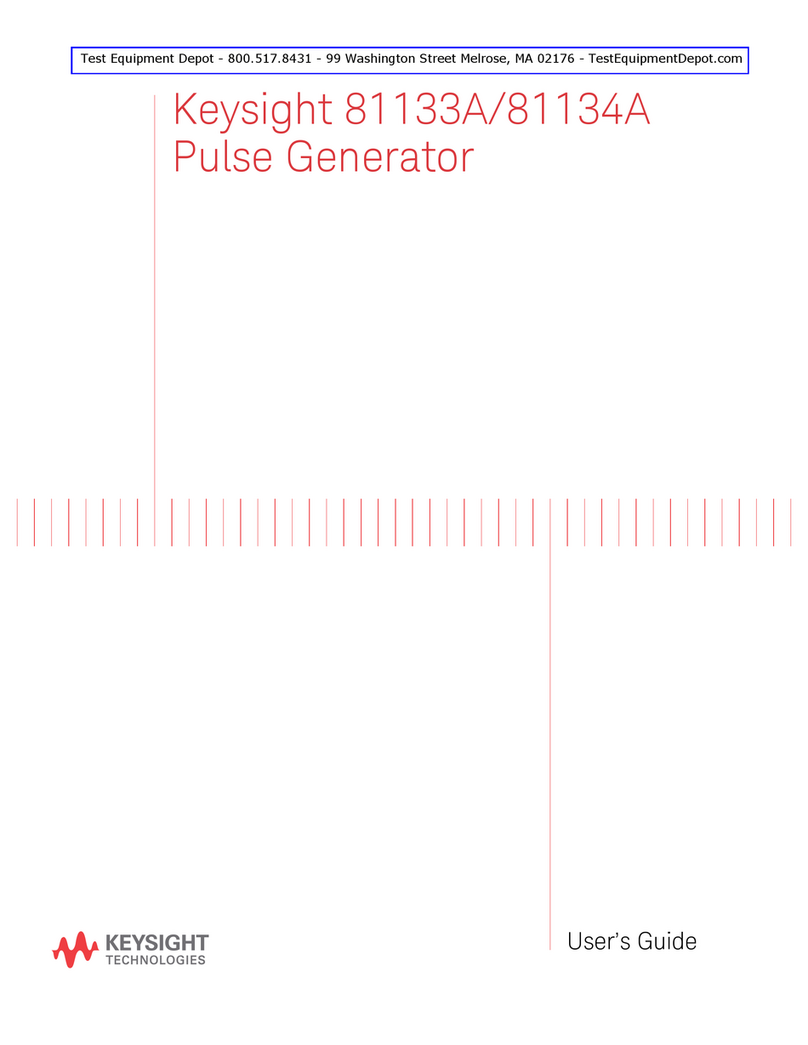
Keysight Technologies
Keysight Technologies 81133A User manual
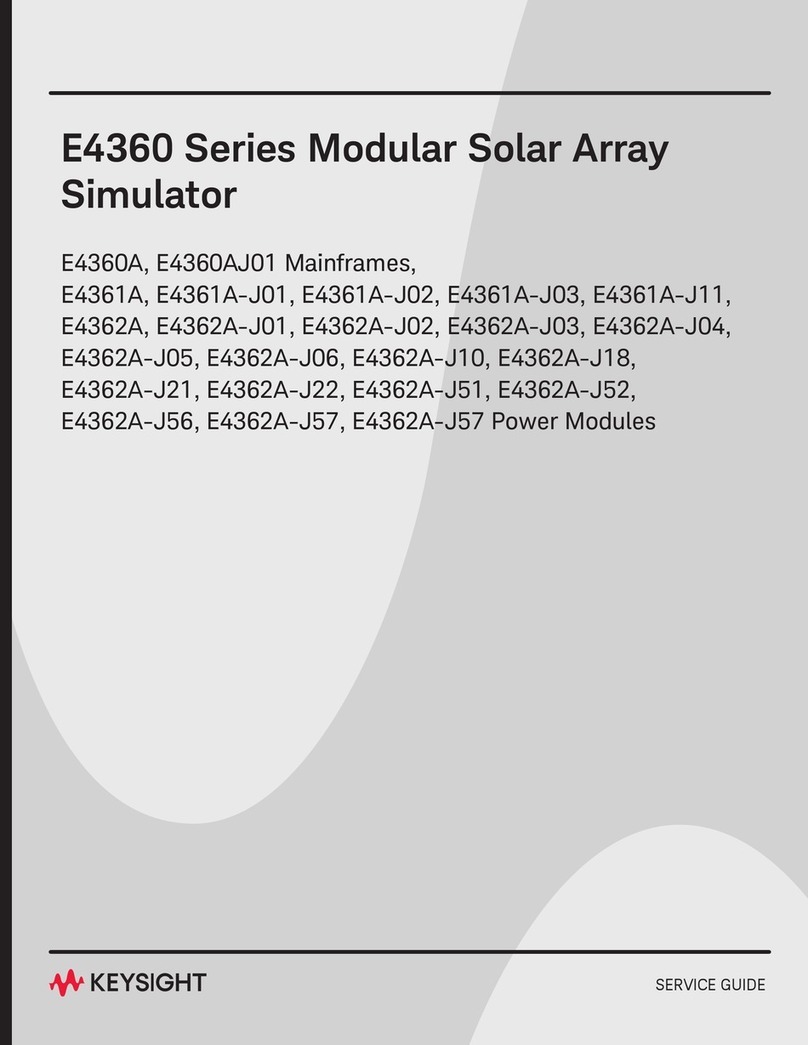
Keysight Technologies
Keysight Technologies E4360A User manual
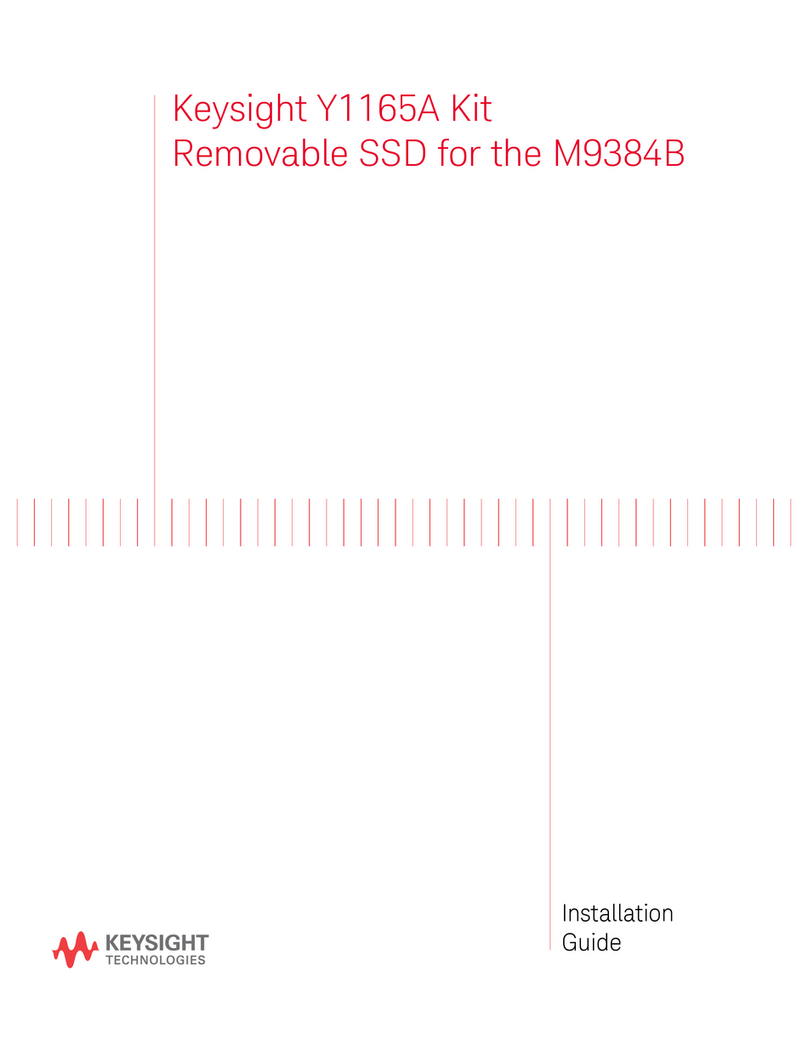
Keysight Technologies
Keysight Technologies Y1165A User manual
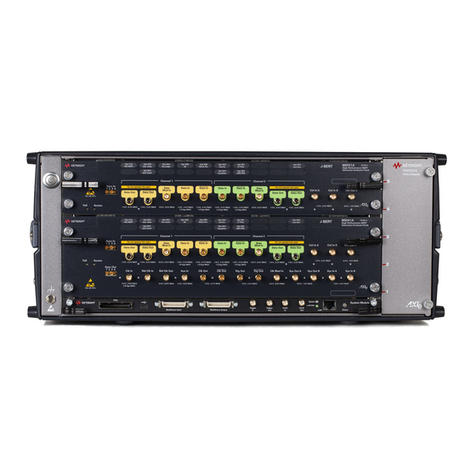
Keysight Technologies
Keysight Technologies N5991 User manual
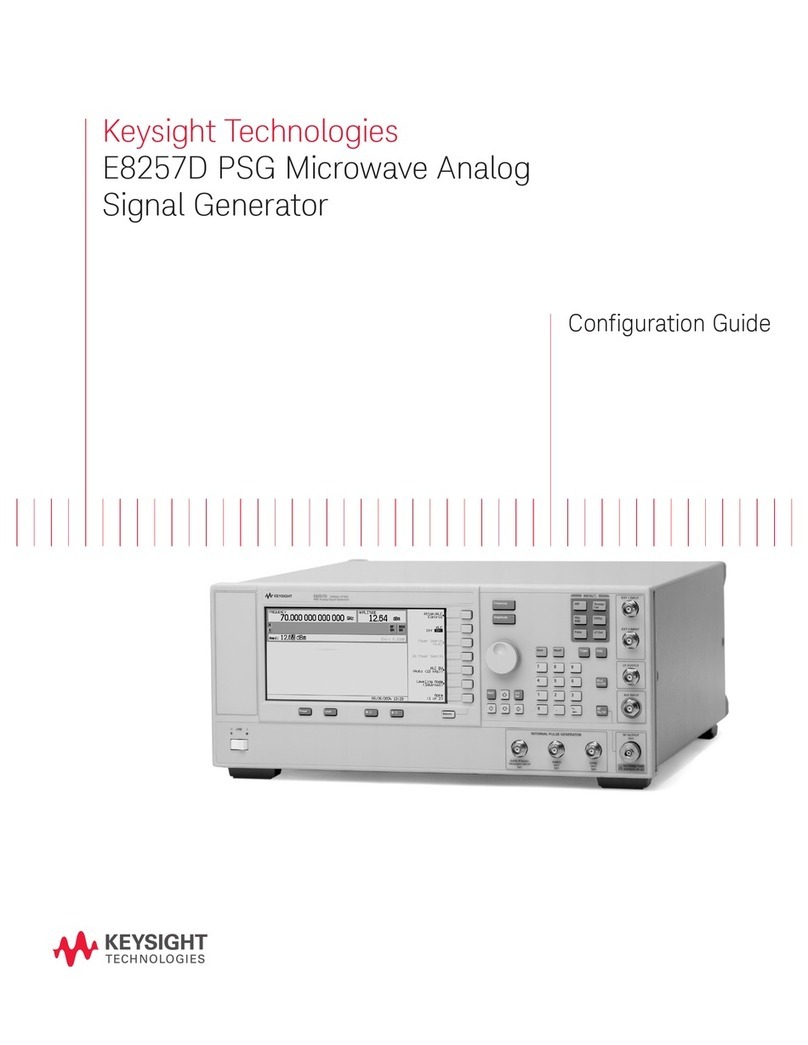
Keysight Technologies
Keysight Technologies E8257D User manual

